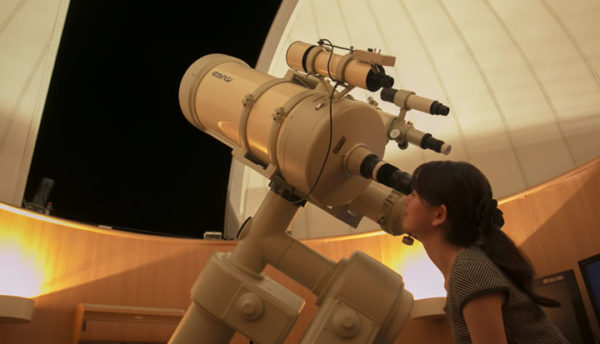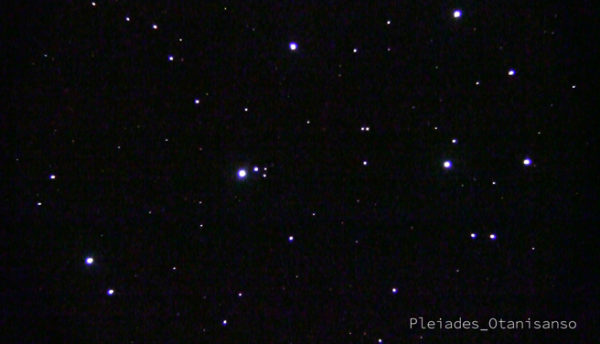- Astronomical Observatory
- 2019/07/10
【July in the Observatory】Summer’s main event is the planets! Come see the solar system’s top two largest, Jupiter and Saturn!
On July 10th, Saturn will be in close proximity to the earth. Come take a look at this planet’s beautiful rings through our observatory telescope.
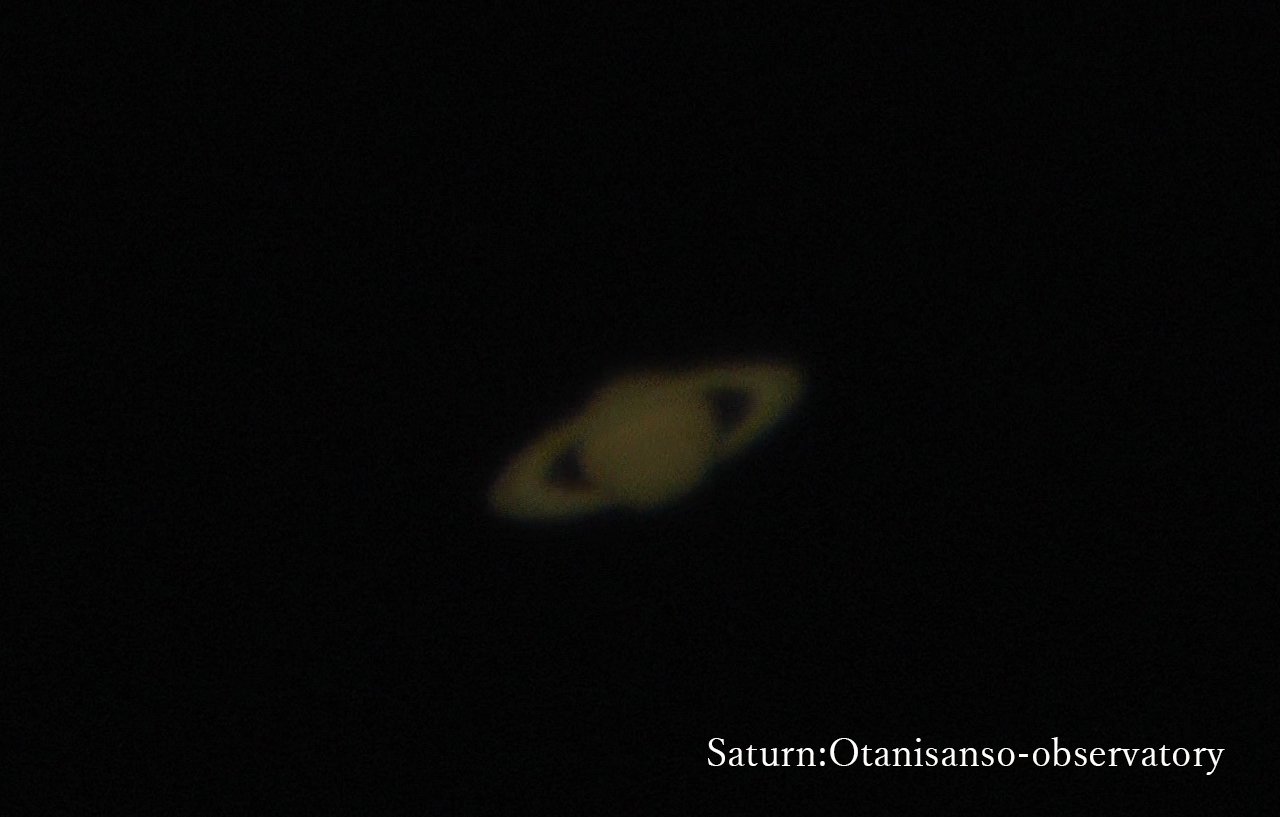
Following Jupiter, the month of July will be good for observing Saturn. We will also approach the moment when the planet will be in opposition, exactly opposite the sun from the earth.
Greetings from the Otani Sanso Astronomical Observatory Dome.Today we’ll be discussing what’s visible in Nagato Yumoto Onsen’s night skies in July, 2019. Following Jupiter in June, visitors will be able to get a good view of Saturn in July. On July 10th (Wed), Saturn will form a straight line with the sun, as viewed from earth, brining it into “opposition,” and bringing it close to the earth. On July 16th, Saturn and the moon will become extremely close, making for an amazing evening sky with both Saturn and a near-full moon. We’d also like to invite you to observe the beautiful rings of Saturn during this period. Visitors will be able to observe the rings through our telescope, too, so please consider stopping by. Even without a telescope nearby, however, you should be able to observe the planet with the naked eye from areas with no street lights. Saturn will be the cream-colored star slightly low in the sky to the south, and Jupiter is the slightly brighter star. If weather conditions are good, you may even be able to see the Milky Way passing between Jupiter and Saturn, so when you head out for a cool evening walk, consider taking a look up at the interesting stars that adorn the skies in summer. (Image: Saturn, as photographed from the Astronomical Observatory Dome at Otani Sanso in the past)
What is “opposition”?
The planets of the solar system are said to be in opposition when seen from the earth, in the instant when one of them is exactly opposite the sun on the other side of the earth, forming a straight line. The planets revolving around the sun are all located in different positions, but when they are “in opposition,” they form a straight line with the earth in the center, and therefore are at their closest. On June 11 (Tue), Jupiter will be in opposition with the constellation Ophiuchus (such that the sun, earth, and Jupiter will align), meaning that we will be able to see it quite early in the morning.Times at which Saturn will rise and set
- July 1 (Mon) …Sunset around 7:32 p.m., Saturn-rise around 7:56 p.m.
- July 10 (Wed) …Sunset arund 7:31 p.m., Saturn-rise around 7:18 p.m.
- July 20 (Sat) …Sunset around 7:27 p.m., Saturn-rise around 6:36 p.m.
- July 30 (Tue) …Sunset around 7:20 p.m., Saturn-rise around 5:54 p.m.
Comparing with the size of the earth! Just how big are Jupiter and Saturn?
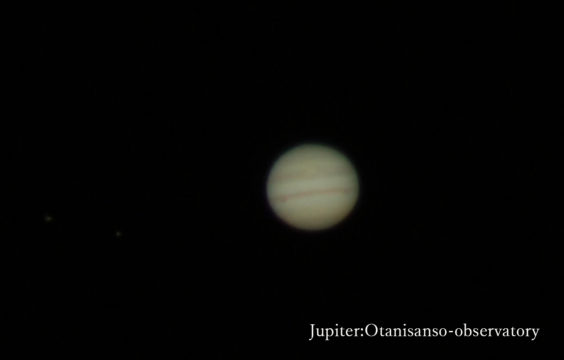 As you’ve probably heard before, Jupiter and Saturn are the largest planets in the solar system. Jupiter’s diameter is 11 times that of the earth’s, and Saturn’s diameter is roughly 9 times the earth’s. If we imagine the earth as a golf ball, Jupiter would be a balance ball, and Saturn, a beach ball. The earth’s moon, as it happens, it about 0.27 times the size of the earth, which would make it about the size of a marble in comparison. (Image: Jupiter, as photographed from the Astronomical Observatory Dome at Otani Sanso in the past)
As you’ve probably heard before, Jupiter and Saturn are the largest planets in the solar system. Jupiter’s diameter is 11 times that of the earth’s, and Saturn’s diameter is roughly 9 times the earth’s. If we imagine the earth as a golf ball, Jupiter would be a balance ball, and Saturn, a beach ball. The earth’s moon, as it happens, it about 0.27 times the size of the earth, which would make it about the size of a marble in comparison. (Image: Jupiter, as photographed from the Astronomical Observatory Dome at Otani Sanso in the past)
What are the beautiful rings of Saturn made of?
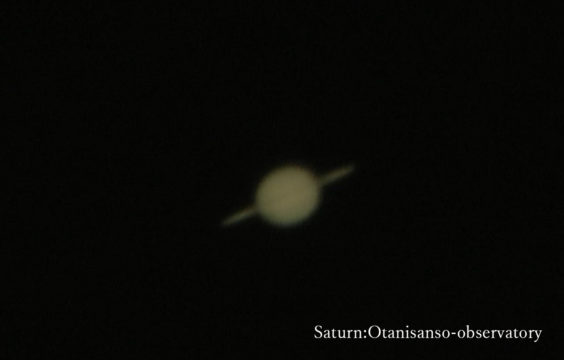 Saturn is best known for its beautiful rings. But what exactly are they made of? These rings are actually made of countless particles of ice. Some of these particules are as small as a grain of dust, while others are great chunks, several meters across. These ice particles are formed into rings by a balance of Saturn’s rotation and gravitational pull, and centrifugal force. It has been discovered, however, that when these ice particles are hit with UV rays from the sun, they become electrified, destroying the balance of the rings, and sending a rain of ice onto the planet. This discovery was made based on data from NASA’s unmanned space probes Voyager 1 & 2, and according to new research from NASA, the amount of ice rain that falls is “equivalent to the amount to fill an Olympic pool in 30 minutes.” It has also been announced that Saturn’s rings may disappear altogether in one hundred million years. (Image: Saturn, as photographed from the Astronomical Observatory Dome at Otani Sanso in the past)
Saturn is best known for its beautiful rings. But what exactly are they made of? These rings are actually made of countless particles of ice. Some of these particules are as small as a grain of dust, while others are great chunks, several meters across. These ice particles are formed into rings by a balance of Saturn’s rotation and gravitational pull, and centrifugal force. It has been discovered, however, that when these ice particles are hit with UV rays from the sun, they become electrified, destroying the balance of the rings, and sending a rain of ice onto the planet. This discovery was made based on data from NASA’s unmanned space probes Voyager 1 & 2, and according to new research from NASA, the amount of ice rain that falls is “equivalent to the amount to fill an Olympic pool in 30 minutes.” It has also been announced that Saturn’s rings may disappear altogether in one hundred million years. (Image: Saturn, as photographed from the Astronomical Observatory Dome at Otani Sanso in the past)
<For reference> Subscribe to NASA’s Newsletter NASA Research Reveals Saturn is Losing Its Rings at “Worst-Case-Scenario”Rate __Dec. 18, 2018 NASA’s Cassini Data Show Saturn’s Rings Relatively New_Jan. 18, 2019If you’d like to see more information about Saturn, we recommend taking a look at the National Astronomical Observatory of Japan’s website, which has a lot of interesting information. ()
(For reference:To the National Astronomical Observatory of Japan Website)
Legends related to the stars of July
The Milky Way and Summer’s Great Celestial Triangle
During the season of Tanabata—Japan’s Star Festival, which celebrates the story of two star-crossed lovers, represented by stars on opposite sides of the heavenly river, the Milky Way—people in Japan may find themselves looking up to the heavens for a glimpse of the Milky Way. The Milky Way is visible year-round, but it is especially easy to see during the Tanabata season, from July to September. In order to find the Milky Way, one trick is to first locate the first star of the three that form the Great Summer Triangle (including Vega, Deneb, Altair). These three stars shine high in the southeastern sky, and are bright stars, fairly easy to find. The topmost of these is Vega (of the constellation Lyra, and representing the Princess Orihime in the Tanabata legend), and to the lower part of the triangle is Altair (of the constellation Aquila, and representing Princess Orihime’s lover, Hikoboshi), and between these stars is Deneb (of the constellation Cygnus). In the romantic tale of Tanabata, it is the star Deneb that forms a bridge between Vega and Altair across the river of the Milky Way. It seems possible that the legend springs from the positioning of these stars.Stellar Objects Expected to be Visible in July
Expected Stellar Observations
- July 1 (Mon) to 5 (Fri): Jupiter, Antares, Bega, Deneb, Saturn ⇒July 3 (Wed) New Moon
- July 6 (Sat) to 17 (Wed): the Moon, Jupiter, Saturn, Antares, Vega, Deneb, Altair ⇒ Juy 9 (Tue) Waxing Moon, July 17 (Wed) Full Moon
- July 18 (Thu) to 31 (Wed): Jupiter, Saturn, Antares, Vega, Deneb, Altair ⇒ July 25 (Thu) Waning Moon
Star-Gazing Topics
- ■ July 1 (Mon) … around 7:56 p.m., Jupiter will rise
- July 10 (Wed) … Jupiter will be in opposition with the constellation Sagitarrius (In opposition, the sun, earth, and Jupiter will form a straight line)
- July 13 (Sat) …the moon and Jupiter will be close to one another
- July 16 (Tue) …the moon and Saturn will be close to one another
- July 20 (Sat) …around 6:36 p.m., Saturn will rise
- July 30 (Tue) …around 5:54 p.m. Saturn will rise
Please check the National Astronomical Observatory of Japan website for sunset times in Yamaguchi Prefecture. (See: National Astronomical Observatory of Japan Website)
Making a Reservation at the Astronomical Observatory
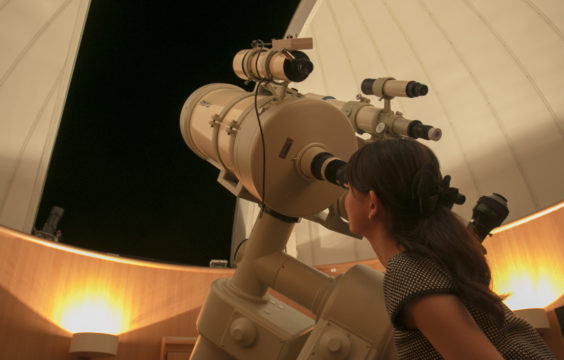
Details
- Observatory Hours… 7:30 p.m. – 10:10 p.m.
- Closed on… Every Tuesday
- Location… Otani Sanso Roof (Just beside the gallery on the 8th floor)
- Price… Free for overnight guests (Viewings available to those who reserve first)
- Using the Observatory… Viewings are available to those who reserve first (12 seats per viewing)
Observation Times
- 7:30 p.m., 7:50 p.m.
- 8:10 p.m., 8:30 p.m., 8:50 p.m.
- 9:10 p.m., 9:30 p.m., 9:50 p.m.
How to Make a Reservation
Please inform us of your desired reservation time from the times listed above (Please tell us via telephone, or write it in the “requests” field) *You may not be able to participate in a viewing if a time slot is fully booked, or due to weather conditions. *Should you be unable to participate in a viewing due to weather conditions, you will be able to see a video from a past viewing.See information from the astronomical observatory dome
■Frequently Asked Questions "Why is there an astronomical observatory on the roof of Otani Sanso?" The president of Otani Sanso, a great fan of the poems of Nagato/Senzaki-born Kaneko Misuzu, built the observatory out of a desire to "share the beautiful stars of Nagato with our guests, too." In fact, it was through a chance meeting via the Kaneko Misuzu Exchange Association that the president met with Dr. Haoru Saji, who greatly affected the president with the beauty of the stars he could see from the observatory at Tamagawa University even during the daytime. "There's much more than your eyes can see," Dr. Saji told him. "Let's take a look at the daytime stars." When you look up at the starry skies of Nagato, here, surrounded by nature, we hope you'll make memories to take home with you that you can look back on fondly.
Night Sky Trivia
The Speed of Light
- Light moves at a speed of approximately 300,000 km per second (7.5 revolutions around the Earth), and can cover 9.46 trillion km in a year.
- It takes light from the sun 8 minutes and 19 seconds to reach the earth.
- It takes 8 minutes and 19 seconds for light from the sun to reach the Earth.
Distances in Space
- Because space is so vast, we use “light years” and “astronomical units (AU)” to describe the distances between stars.
- 1 light year = the amount of distance light can travel in one year (9.5 trillion km)
- 1 astronomical unit = the distance between the sun and the Earth (approx. 150 million km)
Earth Time
- There are 24 hours in one day, but it takes 23 hours and 56 minutes for a rotation of the earth, leaving a margin of 4 minutes.
- The reason we have “leap years” is because the Earth’s orbital period around the sun is just shy of 365 Earth days.
- 1 rotation of the Earth (23 hours 56 minutes) = 400 m/sec
- 1 revolution of the Earth (365 days) = 30 km/sec
If you’d like to see more information about the night skies, the National Astronomical Observatory of Japan is extremely interesting. Please take a look.
